Frequently Asked Questions About Making Tax Digital

Making Tax Digital is part of the government’s overarching efforts to digitise the tax administration system. This applies to VAT, income tax, and corporation tax – for both businesses and individuals.
HMRC believes that digitisation will make it easier for individuals and businesses to reduce errors made during taxes and, of course, the chances of fraud.
It’s no secret that the tax system in the UK can be complicated and the MTD has made it essential to have your questions addressed by a professional accountant. We have included a number of common questions about MTD and their answers.
Q1. Do I have to use Making Tax Digital?
If you fall under the category of businesses or individuals that have to comply with MTD, there’s unfortunately very little you can do to avoid it. There are different deadlines for different taxes covered by MTD. Make sure you know from when your business has to comply with Making Tax Digital.
Q2. Can you deregister from Making Tax Digital?
Once you start using MTD, it isn’t normally possible to opt out. You can request the HMRC to exempt your business from MTD. Possible reasons that they may entertain include:
- Age, disability, remote locations
- Religious reasons that prevent you from using computers
- Other reasons that explain why MTD isn’t practical for your accounting system
Q3. Does MTD apply to self-employed people?
Self-employed tax payers and sole traders have until April 2026 to comply with MTD. The government had plans to schedule this for April 2023 but made the decision to give taxpayers more time to prepare – given the current unpredictable economic conditions.
This means that sole traders and self-employed taxpayers can use the current Self Assessment Tax system to file their annual returns. This will change from April 2026 because the self-assessment tax system will be replaced by MTD.
However, if your self-employed business is VAT registered, you will have to follow MTD regime for VAT returns and register for MTD for VAT. Making Tax Digital for VAT applies to businesses regardless of their legal structure.
Q4. If my taxable turnover falls below £90,000, can I stop using MTD for VAT?
From April 2022 MTD for VAT applies to all VAT registered businesses regardless of whether they’re above or below the VAT registration threshold. Once you register for MTD for VAT, you are required to stay in it.
The MTD-compatible software
Looking for the best accounting software solution To Comply with Making Tax Digital?
Check the software thoroughly tested by our experienced accountants and bookkeepers from Oxford
Q5. I’m already registered for VAT. Does it mean I already comply with MTD?
Being registered for VAT does not indicate that you automatically comply with MTD. You will have to maintain digital business records that show the relationship between output and input tax in your records. These digital records will be used to submit your VAT return(s) using MTD-compatible software. Additionally, you also have to sign up for MTD for VAT. This doesn’t register your business for VAT for the second time. This only registers your business for being able to submit VAT returns digitally.
Q6. Can I still use spreadsheets for my bookkeeping?
HMRC allows businesses to use spreadsheets for bookkeeping. However, you (or your bookkeeper) will need to use bridging software to submit VAT returns digitally. You’re not allowed to simply log into your HMRC account and manually type the totals onto your VAT return.
Q7. Do I need to scan all my paper records to comply with Making Tax Digital?
No, you only need to maintain some business records digitally, namely:
- Your business name
- Your address
- VAT registration number
- Details of VAT accounting schemes
- Invoices (including tax point date, the net value, and VAT rate)
If you receive invoices in a paper format, it’s still ok to keep them like this. However, you need to input the information from those invoices into your accounting software or a spreadsheet to be able to submit your VAT returns digitally and comply with MTD.
Q8. What software do I need to use for Making Tax Digital?
HMRC has published a list of accounting software that are compatible with Making Tax Digital. One of them is Xero accounting software which is recommended by our bookkeepers and accountants. You can still use spreadsheets to maintain records, but as mentioned earlier, you will need bridging software that can be used to send VAT returns to HMRC.
Q9. How do I know if my current software is MTD-ready?
HMRC defines MTD-compatible accounting software as any programme that can:
- Maintain VAT digital records
- Transfer data between accounting software and HMRC without manual intervention
- Submit data to HMRC for VAT returns via its API
- Retrieve data from HMRC via the API platform
The information about whether your current accounting software is MTD-ready, will usually be available on your software provider’s website.
Need help with MTD VAT compliance? Contact our team at Joanna Bookkeeping to schedule a confidential consultation with our accountant from Oxford.

Your Accountant in Oxford
Oxford Office
Joanna Bookkeeping
The Wheelhouse Angel Court
First Floor, Angel Court
81 St Clements St
Oxford
OX4 1AW
Connect
joanna@joannabookkeeping.co.uk
01865 591952





